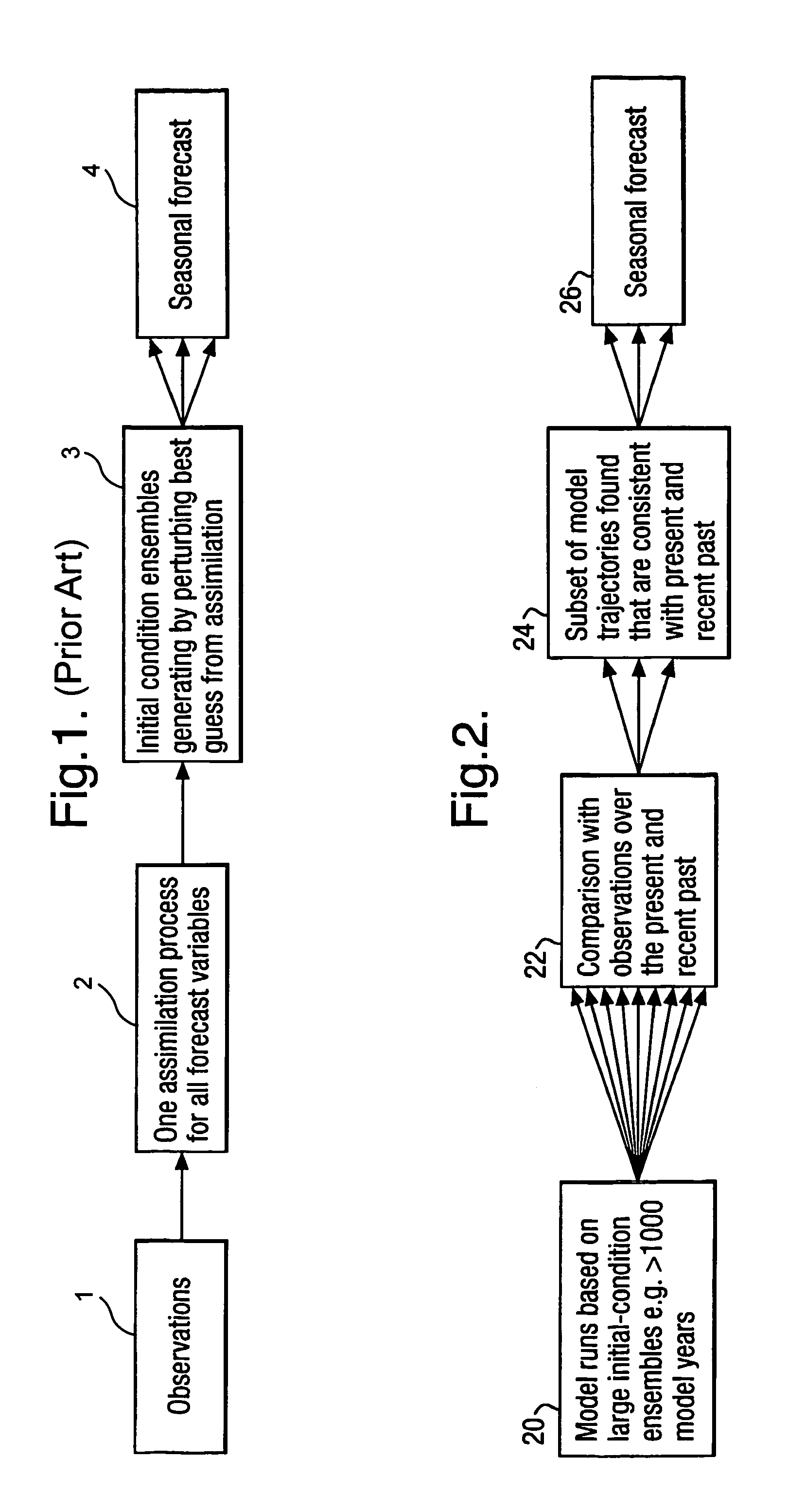Method and system for producing a weather forecast
a weather forecast and system technology, applied in meteorology, instruments, measurement devices, etc., can solve the problems of unrealistically large amplitude waves propagation, difficult and problematic “ensemble initialization” process, and error in forecasting, etc., and achieve the effect of being particularly useful
- Summary
- Abstract
- Description
- Claims
- Application Information
AI Technical Summary
Benefits of technology
Problems solved by technology
Method used
Image
Examples
Embodiment Construction
[0023]FIG. 2 illustrates the first embodiment of the present invention. As indicated at step 20 an a-ogcm is set running from a large number of different initial conditions on around 10,000 personal computers. The different initial conditions are obtained by picking different points on the “climate attractor” estimated from a long base-line integration of the model. These points are generated by performing ensembles of the order of 100 ensemble members. Thus on a two year, 100 ensemble matrix, each will create another 100 perturbations, giving the 10,000 members. Hence, it is not necessary to run the model for 10,000 years to get 10,000 sets of initial conditions.
[0024]The results of the model runs are then compared at step 22 with real-world observations over the present and recent past. The observations may be of the current and past state of the atmosphere-ocean system, such as atmospheric winds, temperatures, pressure, cloud properties, precipitation, surface fluxes, sea level, ...
PUM
 Login to View More
Login to View More Abstract
Description
Claims
Application Information
 Login to View More
Login to View More - R&D
- Intellectual Property
- Life Sciences
- Materials
- Tech Scout
- Unparalleled Data Quality
- Higher Quality Content
- 60% Fewer Hallucinations
Browse by: Latest US Patents, China's latest patents, Technical Efficacy Thesaurus, Application Domain, Technology Topic, Popular Technical Reports.
© 2025 PatSnap. All rights reserved.Legal|Privacy policy|Modern Slavery Act Transparency Statement|Sitemap|About US| Contact US: help@patsnap.com



